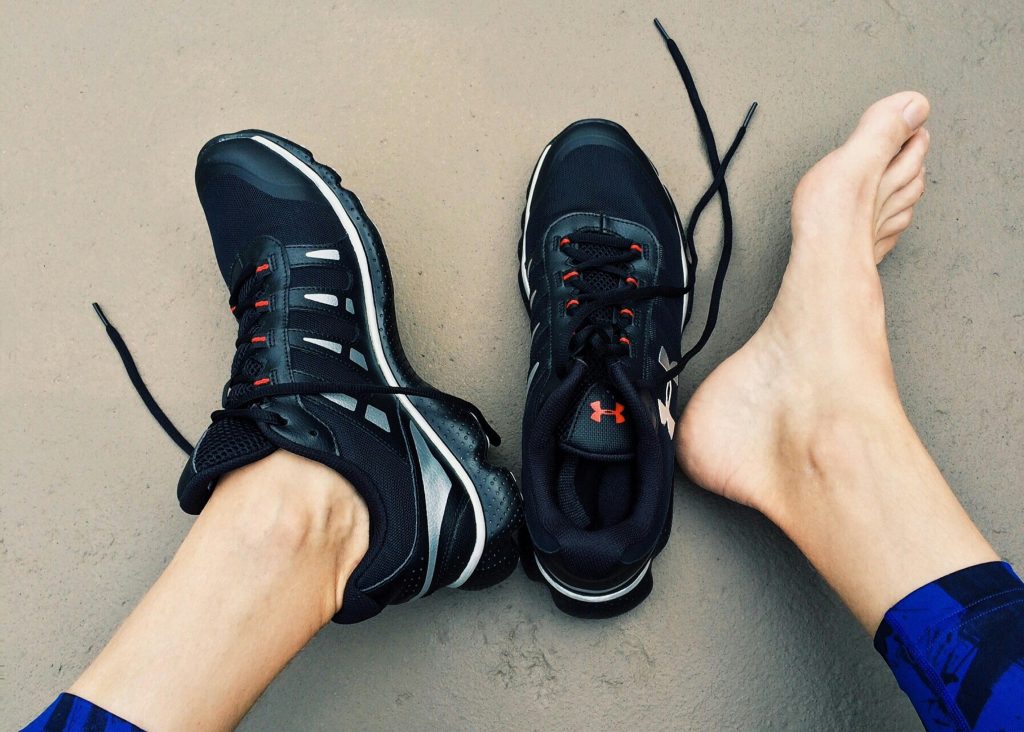Ingrown toenails, while common, can be a painful and inconvenient experience. They most frequently affect the big toe, but any toenail is susceptible. As the edge of your nail curves and grows into the soft skin bordering your toe, it can cause a range of symptoms from mild discomfort to significant pain and even infection. Recognising the signs of an ingrown toenail early allows you to take appropriate action at home or promptly seek professional care, potentially preventing complications.

Key Signs Your Toenail Might Be Ingrown
The hallmark signs of an ingrown toenail can develop gradually or appear seemingly suddenly. Here’s what to watch out for:
- Pain and Tenderness: One of the earliest and most common signs of an ingrown toenail is pain and tenderness along the sides of your toe where the nail is growing abnormally. This pain is likely to worsen when pressure is applied, such as when wearing shoes or walking.
- Redness: The skin around the ingrown nail may become red and inflamed, signaling irritation.
- Swelling: As the area becomes more irritated, swelling will likely occur around the affected edge of the nail.
- Skin Changes: The skin around the ingrown nail can sometimes overgrow the nail edge itself, appearing to partially cover and obscure the nail. Additionally, hardening of the skin around the area can develop.
- Drainage: If the ingrown toenail becomes infected, you might see fluid or pus seeping out from around the nail. This is usually accompanied by other signs of infection, such as increased redness, warmth, and severe pain.
Stages of Ingrown Toenails and Worsening Symptoms
Ingrown toenails often progress through stages, each with increasingly prominent symptoms:
- Stage 1: Mild In this initial stage, you’ll likely experience some tenderness, swelling, and redness at the affected edge of the toenail.
- Stage 2: Moderate As the nail penetrates further into the skin, pain intensifies, and the swelling and redness become more notable. You might also start to see a buildup of fluid at the affected area.
- Stage 3: Severe This stage usually indicates infection. The pain is likely severe, with increased swelling, redness, and drainage of pus. The inflamed skin might have a raw appearance and feel warm to the touch.
When to See a Doctor
While mild ingrown toenails sometimes resolve with dedicated home care, don’t hesitate to visit a doctor in the following situations:
- Signs of Infection: If you observe pus drainage, increasing redness extending beyond the toe, intense pain, warmth around the area, or fever, it’s crucial to seek medical attention quickly.
- Preexisting Conditions: Anyone with diabetes, circulatory problems, or nerve damage in their feet should see a doctor about any degree of ingrown toenail to prevent complications.
- Worsening symptoms: When home care measures don’t provide relief, or if redness, swelling, or pain worsen over a few days, it’s time for a professional assessment.
- Uncertain Diagnosis: If you’re not sure if you’re dealing with an ingrown toenail or another foot ailment, a doctor can clarify and recommend appropriate treatment.
Factors that Increase Your Risk of Ingrown Toenails
Certain factors or habits can make you more prone to ingrown toenails. Understanding these risks can help you take extra preventative measures:
- Improper Nail Trimming: Cutting toenails excessively short or rounding the corners significantly increases your risk.
- Naturally Curved Nails: If you have inherited toenails with a natural inward curve, they’re more likely to pierce the surrounding skin.
- Trauma or Injury: Injuries to your toe, like stubbing it or repetitive activities that put pressure on your toes, can alter nail growth patterns and increase your risk.
- Tight Footwear: Consistently wearing shoes that squeeze your toes promote abnormal nail growth.
- Fungal Infections: Thickening of the nails due to fungal infections can make them more prone to becoming ingrown.
Home Evaluation of Your Toenail
Along with noting symptoms, a careful visual inspection can offer further clues:
- Gently press the skin: If pressing down on the skin next to the nail triggers pain or releases pus, it reinforces the likelihood of an ingrown toenail.
- Look for the edge: Try to see if you can locate the edge of the nail. If the skin partially covers the corner of the nail, it’s likely ingrown.
Prevention Tips
Avoiding ingrown toenails is often possible with careful attention to the following:
- Nail Trimming: The best prevention lies in correct nail trimming. Always cut straight across, leave the nail slightly longer than the skin at the edge, and use proper toenail clippers for the job.
- Footwear: Choose shoes that fit well and provide ample room for your toes to avoid excessive pressure.
- Protect Your Toes: When engaging in activities that have potential for toe injury, wear appropriate protective footwear.
- Address Underlying Conditions: If you have conditions that impact foot health, like diabetes or circulation issues, managing those conditions lowers your risk of ingrown toenails and other complications.
Potential Complications of Untreated Ingrown Toenails
While minor cases often resolve spontaneously or with home care, neglecting an ingrown toenail can lead to complications, particularly for those with underlying health issues. Potential problems include:
- Severe Infection: Infection can spread beyond the toe, into the bone, or even cause a systemic (body-wide) infection. This warrants prompt medical treatment.
- Tissue Damage: In severe cases, excessive ingrowth of skin or chronic infection can lead to changes in the surrounding soft tissue. This might require surgical correction.
- Diabetic Complications: For those with diabetes, even a minor ingrown toenail can increase the risk of serious foot ulcers or other complications due to impaired healing and circulation.
Don’t Confuse With Other Conditions
It’s important to remember that not every pain around your toenail signals an ingrown toenail. Other conditions can cause similar symptoms:
- Fungal Infections: Fungal nail infections change nail thickness, shape, and can indirectly trigger pain as the nail grows abnormally, potentially resembling an ingrown toenail. A doctor can diagnose fungal nail infections accurately.
- Gout: This arthritic condition sometimes causes flare-ups in the big toe joint, leading to pain, redness, and swelling that can be confused with an ingrown toenail.
- Injuries: Toe injuries due to stubbing, sports, or other causes could result in lingering pain and inflammation mimicking an ingrown nail.
Key Takeaways
Understanding the classic signs and symptoms of ingrown toenails empowers you to take early action and avoid potential complications. If you have signs such as pain, redness, and swelling along a nail’s edge, initiate home care techniques.
However, don’t hesitate to seek professional guidance if you experience worsening symptoms, pus, fever, have an underlying medical condition, or are unsure if you’re truly dealing with an ingrown toenail. Addressing the issue promptly offers the best chances for a speedy recovery and avoidance of any long-term problems.
